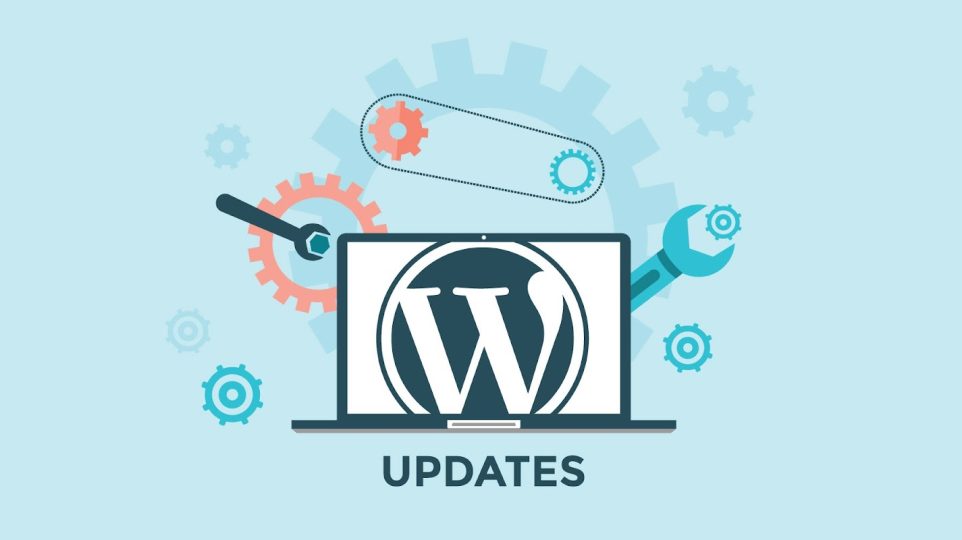WordPress, as one of the most popular open-source content management systems in the world, continuously releases updates aimed at improving security, speed, and website performance while addressing existing bugs and issues.
For this reason, it is crucial to update WordPress to the latest available version as soon as a new update is released.
In this article, we will examine the impact of WordPress updates on the speed and overall performance of WordPress websites and take a closer look at the different types of WordPress updates.
What are the types of WordPress updates?
Due to its open-source nature, WordPress is supported and updated by developers worldwide. These developers regularly fix speed and performance issues, add new features, and identify and patch security vulnerabilities.
All these changes are released as new WordPress versions, which can be categorized into three main types:
-
Major Updates
-
Minor Updates
-
Security & Maintenance Updates
1. Major Updates
These updates are typically released every 4 to 6 months and include significant changes in functionality, new features, and major improvements to the WordPress core. Major updates are usually indicated by a change in the first number of the version (e.g., from 6.6 to 6.7).
For example, the introduction of the Gutenberg editor in WordPress 5.0 was a major update. To date, WordPress has released 43 major updates, and by the end of 2025, this number is expected to reach 46.
2. Minor Updates
These updates are released between major versions and focus on fixing bugs, security vulnerabilities, and improving the stability of WordPress. Minor updates are usually applied automatically to most WordPress websites and are indicated by a change in the third digit of the version number (e.g., from 6.7 to 6.7.2).
Note: As of the writing of this article (March 31, 2025), the latest released version of WordPress is 6.7.2.
3. Security & Maintenance Updates
These updates are released unexpectedly whenever a security vulnerability or a critical issue is discovered in WordPress. The primary goal of these updates is to protect WordPress sites from security threats.
WordPress update release pattern:
-
Major versions: Every 4 to 6 months
-
Minor versions: Every few weeks
-
Security updates: As soon as a vulnerability is discovered
Why should WordPress always be kept up to date?
Regularly updating WordPress is essential for maintaining security, optimizing performance, and accessing the latest features. Keeping your site up to date helps protect it from security threats and ensures the best user experience.
By updating WordPress, you benefit from the following advantages:
1. Enhanced website security
The most important reason to update WordPress is to protect your site from cyberattacks. Each time new security vulnerabilities are discovered, the WordPress team fixes them and includes the patches in updates.
If your WordPress site is outdated, it could be an easy target for hackers.
2. Fixing bugs and errors
Every new WordPress version resolves various technical issues and identified bugs. These fixes contribute to improved website stability and overall performance.
3. Improved website speed and performance
Newer WordPress versions often include optimizations that enhance page load speed and site performance. Since Google prioritizes user experience and website speed as ranking factors, regularly updating WordPress can positively impact both user experience and SEO.
4. Access to new features
Major WordPress updates introduce new features and functionalities that enhance customization options, improve media management, and offer better security.
For example, in WordPress version 6.0, the following new features were introduced:
-
More customization options for themes without requiring coding
-
New options for managing image galleries and media
-
Improved security and vulnerability fixes
-
Faster page load times
-
Enhanced Gutenberg editor usability
5. Compatibility with plugins and themes
Plugins and themes are frequently updated to stay compatible with new WordPress versions. If you use updated plugins but an outdated WordPress version, your website’s functionality may break.
6. Older WordPress versions are no longer supported
WordPress does not provide support for older versions. If you use an outdated version and encounter an issue requiring support, you might find yourself in trouble.
Using an outdated version of WordPress, themes, or plugins can leave your site vulnerable to hackers and malware while depriving you of a secure, fast, and stable website.
In fact, statistics and reports show that most hacked WordPress sites were using outdated versions of WordPress, plugins, or themes.
Note: Minor updates are applied automatically, but for major updates, unless you are using a managed WordPress hosting service, you need to update WordPress manually.
Essential steps before and after updating WordPress
The most crucial step before updating WordPress is to take a complete backup of your website.
Even if you use automatic backup plugins like Duplicator, it’s best to create a fresh backup and store it in a secure location, such as your personal computer or cloud storage (e.g., Google Drive).
Your backup should include the following:
✅ WordPress database backup
✅ Backup of all uploaded media files
✅ Backup of WordPress plugins and themes
✅ Backup of WordPress configuration files
✅ Backup of core WordPress files
This step is critical because, in case of any issues, you can restore your site from the backup.
After updating WordPress, check your website to ensure everything is functioning correctly.
To do this, open your site in a new browser window and review the settings in the WordPress dashboard. If you encounter any errors, resolve them as soon as possible. 🚀


